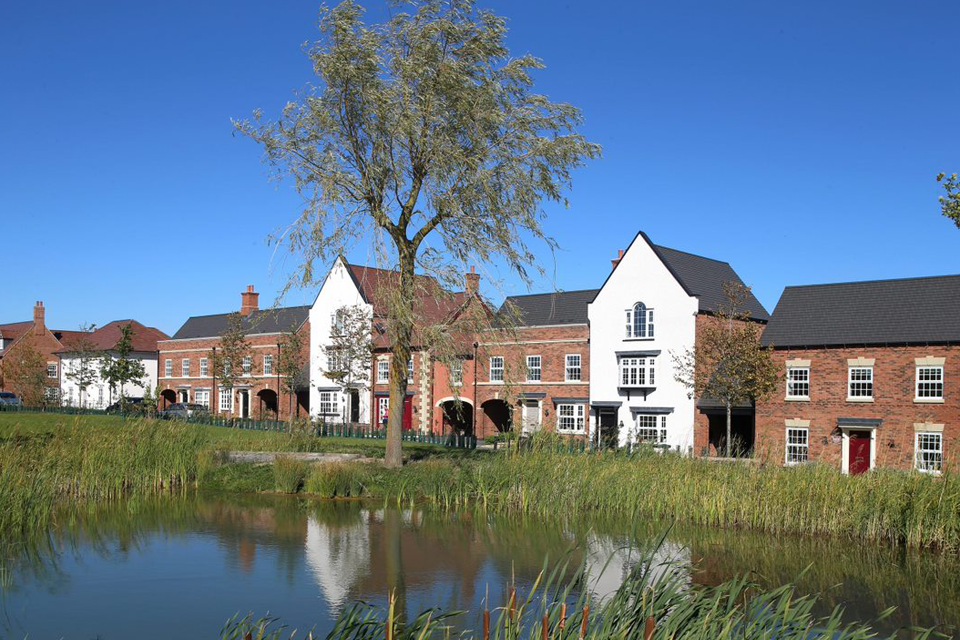10 criteria for effective design coding
A list of 10 criteria that represent good practice in creating, applying and enforcing design codes.
Applies to England

Photo of housing with a large pond in the foreground.
These 10 criteria for effective design coding have been developed by members of the advisory board for the Office for Place. They are designed to provide a framework of good practice in the preparation, application and enforcement of design codes, based on the board’s experience of preparing and working with design codes.
This list does not constitute government planning policy or guidance, it is designed as a helpful tool for local authorities, neighbourhood planning groups and all those involved in creating effective, local design codes. For detailed government guidance on design codes, please refer to the National Model Design Code.
1. Set a clear vision.
A clear and concise vision, setting out ambitions for the area, must be prepared at the start of the design coding process. This will act as a guide, be relevant to the area and record straightforward aspirations so that future action can be evaluated.
2. Align with policies and be evidence based.
Codes will take into account relevant national and local planning policies and have a basis in evidence of the types of places that support well-being and deliver healthy and sustainable outcomes for communities, and places that are safe and inclusive.
3. Find out what people really like.
The codes must be based on robust evidence that has been obtained on what is popular about the design and character of the existing area, and the potential future for the area, and this must be apparent in the way the codes are worded and illustrated.
4. Keep them short, visual and numerical wherever possible.
The codes must be clear and brief, concentrate on essential points, should be illustrated with analytical diagrams, such as sections, not just ‘reference images’, and must be written and presented in a way that can be understood by both professionals and non-professionals.
5. Keep them practical.
The codes must apply to practical choices that are achievable in the design and construction of new places, streets and buildings without unduly restricting the opportunities for creativity.
6. Set definitive requirements through the use of language.
Codes must set requirements to which a design can unambiguously conform or not conform (this will be based on words like, ‘must’, ‘will’ and ‘required’). Guidance can also be usefully included but this must be made clearly distinct from the codes (guidance will use words like, ‘should’, ‘could’, ‘would’, ‘generally’ etc.)
7. Keep them real.
Codes must provide sufficient information to direct design to what is demonstrably popular (see 3, above) in such a way that the results will be recognised by the local community, while allowing opportunities for creative input.
8. Keep them relevant.
What is coded must be relevant to the area that is being coded, taking into account the context and scale of development. For example, it might be appropriate to code for: the density required, the context of new development, relationship to what is existing, what must be conserved; the urban, suburban, rural or new character of the area covered.
9. Make sure they are enforced.
Local authorities must use or establish a process for the approval of codes prepared by others and all codes must be enforced at appropriate points in the process.
10. Allow them to change over time.
Design codes should reflect changes in social, technical and environmental circumstances and so should be reviewed from time to time, taking into account feedback from the outcomes of the code.